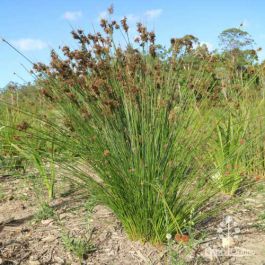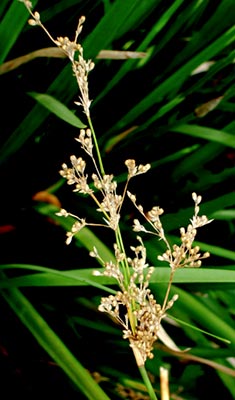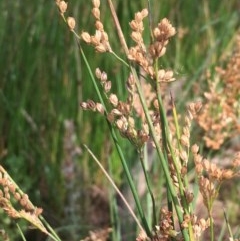Common Rush
weed identification
Common Rush is an emergent, densely tufted, rhizomatous perennial with smooth and usually cylindrical and tapering ‘leaves’ up to 1.2m tall. Flowers are brownish and papery and are located arising from within a ‘leaf’. The plant typically flowers between the months of November to February.
Commonly found along stream and river banks, irrigation supply channels and other very damp and periodically wet sites, including swampland. It usually occurs close to the water’s edge or in shallow water.
Reproduces via seed
Birds will spread seed.
Useful plant for landscaping and wetland rehabilitation. Indigenous peoples used the stem and leaves for fibre to make string, fishing line, woven rugs and baskets.
What does Common Rush look like?
Disadvantages of Common Rush
While it can be an issue in poorly drained pastures, its benefits outweighs this. It’s a great food source for birds and habitat for frogs. It provides stability in the banks surrounding the water’s edge. Only treat this plant if it has become a nuisance then treatment is necessary.
treatment
AQ200 Aquatic Herbicide + Wetting Agent – Chemical Herbicide designed to kill emergent weeds quickly. Use on mild to severe infestations.
Aquatic Weed Rake and Razor Combo – DIY physical removal. Ideal for mild infestations, sensitive water bodies or to aid herbicide treatment.
Aquatic Harvesting – Large amphibious machine that cuts and clears emergent aquatic weeds. Book this service for severe infestations or for larger water bodies.
prevention options
Aerating Fountains – Reduces the severity and likelihood of aquatic weed infestations. Use in any body of water.







